| Entrance | History | Principles | Trainer | Training | Rules | FAQ | Links | Galleries |
| The Principles of Aikido
Copyright © 2001 Friedrich Kemler |
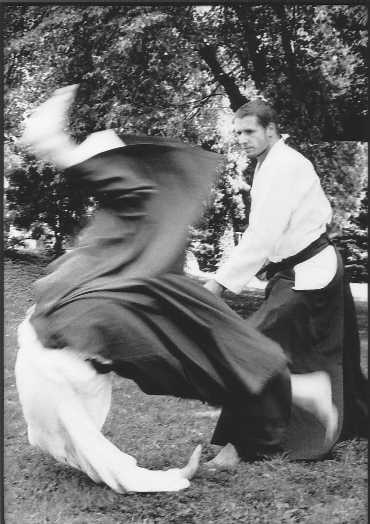 |
| Shisei | |
 |
The meaning of the two characters is figure (sometimes thought of in the sense of aesthetics) and vigor. The whole word denominates the bearing of the body from which the energy of the actions is forthcoming.
As the structure of body carriage enhances the stability when executing a technique, it also influences the mental state. The carriage of the body is far from being fixed in a static manner. In the sword tradition of Ittôryû the concept of the cloud posture (Kumonokamae) is an important principle. A cloud seems to bear a certain form. But if it hits a mountain, it encloses the peak, and rain, hail and lightning fall onto the mountain. Exactly the same happens when I meet my opponent. |
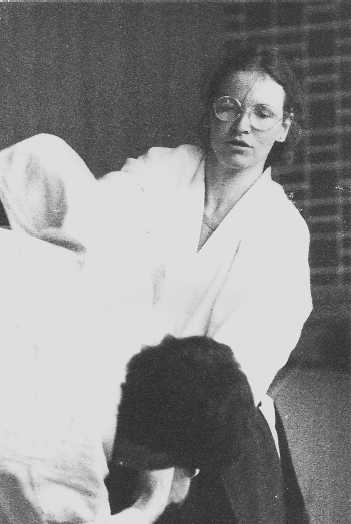 |
| Tanden | |
 |
The meaning of Tanden is the field of the elixir. This is a technical term stemming from traditional Chinese medicine and denominating three energy centers of the human body. The lower Tanden is located below the navel in the body's center of gravity, the middle Tanden is located in the solar plexus and the upper Tanden is located between the eyes, in the middle of the head. These energy centers are bearing importance for the martial arts in several ways. If one takes care in placing the upper Tanden right above the lower Tanden, the resulting posture is guaranteed to be a good one. The awareness of one's breathing should also be directed to the lower Tanden. The fullness of energy should always descend downwards. In the Iging, the classic Chinese book of changes, the hexagram for fire below and water above is assigned far more potential than vice versa. The fire heats the water and generates power. During the execution of a technique one connects the lower Tanden to the leading point of the opponent (e.g. hand or head), and thus leads the movement. |
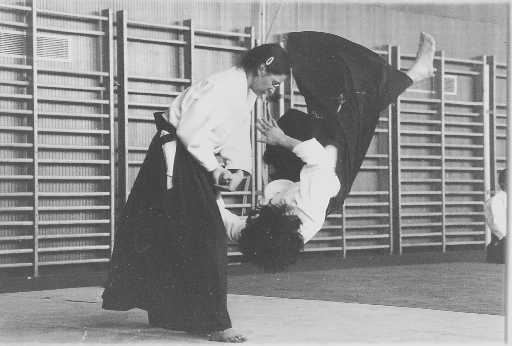 |
| Kokyû | |
 |
The meaning of the characters is exhalation and inhalation. The order is if distinct interest. Exhaling is especially important as a preparation for inhaling. The awareness should be centered on exhalation. Doing the exercise Jaki wo haku one frees oneself from bad Ki by the means of vigorous exhalation.
Generally speaking, breathing is a means for connection. It connects mind and body. It connects my movement with my opponent's movement. Following archaic ideas of Shintô it connects the human Ki with the Ki of the universe. Heaven and earth is connected by the Ki of the universe, man may take part in this connection by the means of breathing. Breathing from the lower belly is used to generate energy in the lower Tanden. Executing a technique, correct breathing causes the integration of movement and facilitates throwing the opponent in a flowing fashion. |
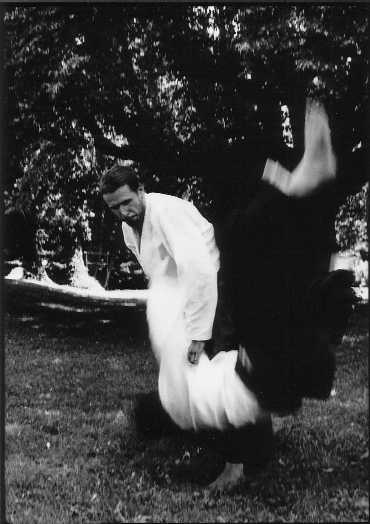 |
| Riai | |
 |
Riai is the inherent logic of technique. Each martial art bases its techniques on certain logical principles.
In Aikidô I use my feeling of energy (Ki) to connect my movement with my opponent's movement, break the opponent's structure (Shisei) and hence his equilibrium (Kuzushi) in order to finally execute a fixation or a throwing technique (Waza). This is accomplished by manipulation of one or more of the opponent's joints. Riai is crucial for a techniques efficiency, but effectiveness also depends on a sound understanding and application of all other principles. |
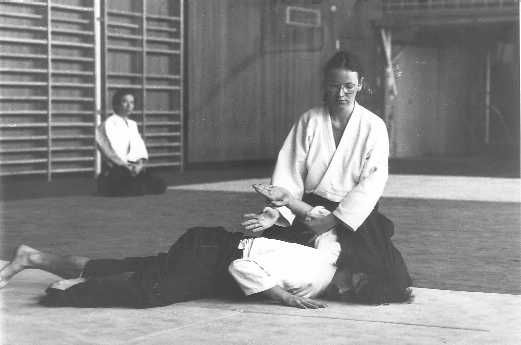 |
| Tegatana | |
 |
Tegatana is the sword hand. This principle stems from ritual hand postures derived from tantric Buddhism and old Shintô. These exercises are used to strengthen the energy center of the hand (Rôkyû) and exact a positive influence on the whole body. The foundation is the abundance of nerve endings in the palm. Massaging the sole of the feet exerts a similar effect.
The form of Tegatana is derived from Kenin, a hand posture of Chinkonhô (a form of Shintoist meditation). Executing Kenin the hands are folded, both index fingers extended and the rest of the fingers interlinked. Separating the hands results in Tôin, a hand posture with all fingers extended, index and middle finger lightly separated, ring and little finger lightly separated and the thumb pointing in three different directions. This form of hand posture is usual in Daitôryû. In modern Aikidô the form is somewhat flattened, but the feeling remains the same. In swordsmanship there exists a similar concept. It is named Tenouchi - the interior of the hand. This principle describes the distribution of force between the fingers holding the sword. The center of awareness and force again are located in Rôkyû. |
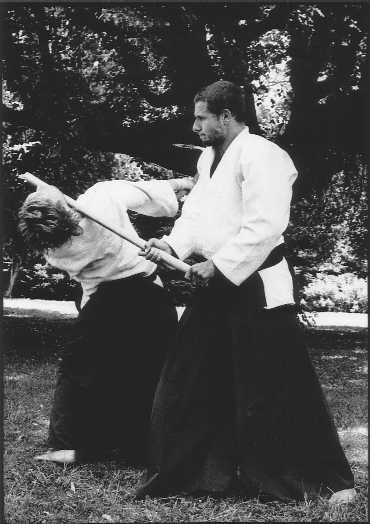 |
| Metsuke | |
 |
The meaning of Metsuke is the attachment of the eyes. Continuing the direction of the glance in a certain direction results in governing one's energy. Since the glance is not focussed, peripheral perception remains an available input channel.
Continuation of the glance's direction or visual concentration on a certain object (eg. the flame of a candle) is utilized in several forms of meditation. |
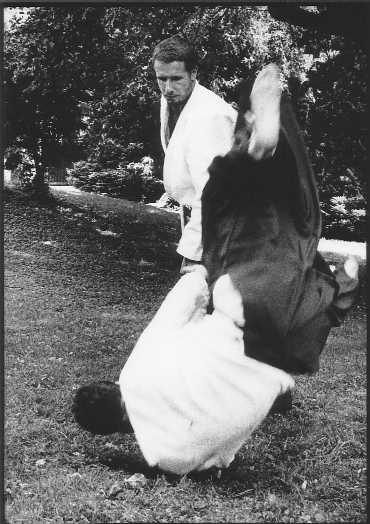 |
| Aiki | |
 |
Aiki is the basic principle of Daitôryû and all its descending martial traditions with Aikidô being the prominent example. This concept is also well known in swordsmanship eg. Ittôryû, which at all times was in close connection to Daitôryû.
From a technical point of view Aiki means the adjoining to the rhythm of the attack. It is the foundation of the successful execution of a technique. The primary condition for Aiki is opening the awareness (Munenmusô = free from impeding thoughts) and a correct application of breathing (Kokyû) connected to the voice (Kiai). It is said, that Aiki and Kiai are the inner and the outer aspect of the same principle. From the viewpoint of psychology Aiki bears the meaning of empathy, receptivity for other people's feelings. This mechanism causes the character of the Aikidô practitioner to be developed to the peaceful. From the spiritual point of view Aiki or Takemusuaiki means the union with all beings, nature, the whole cosmos. This kind of union is the goal of most spiritual traditions. The term Yoga essentially bears the same meaning. |
| Entrance | History | Principles | Trainer | Training | Rules | FAQ | Links | Galleries |